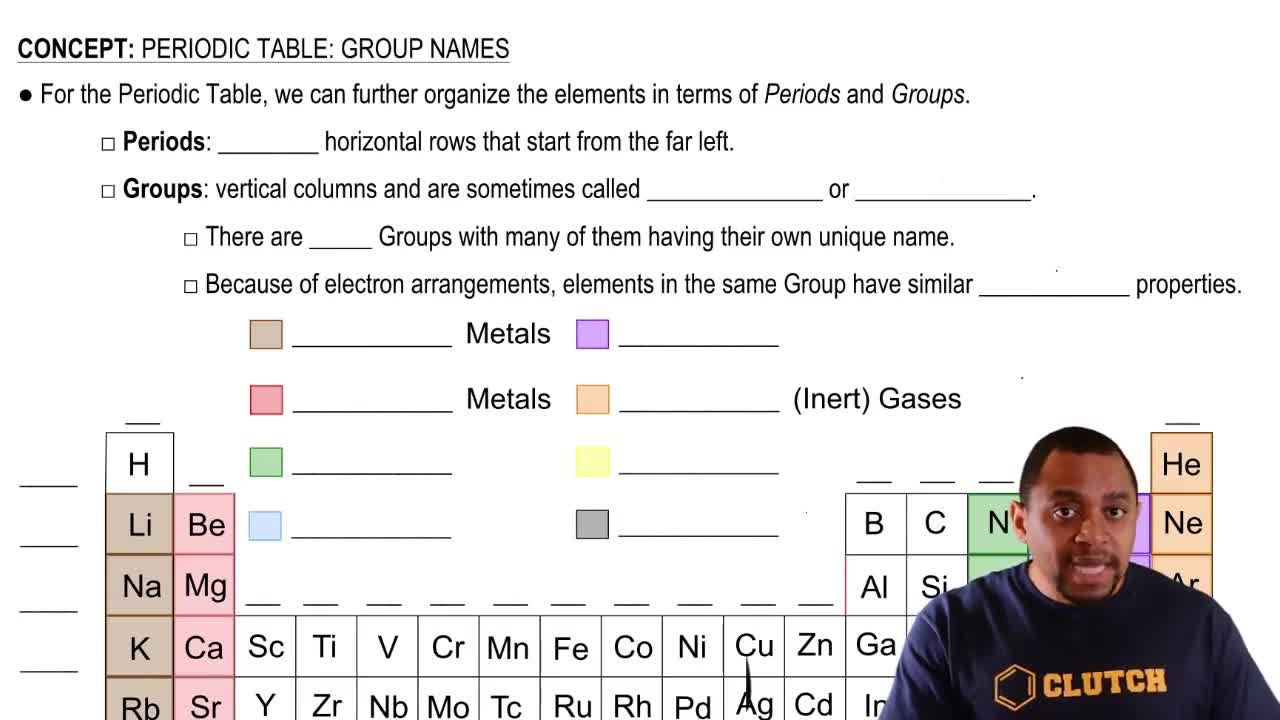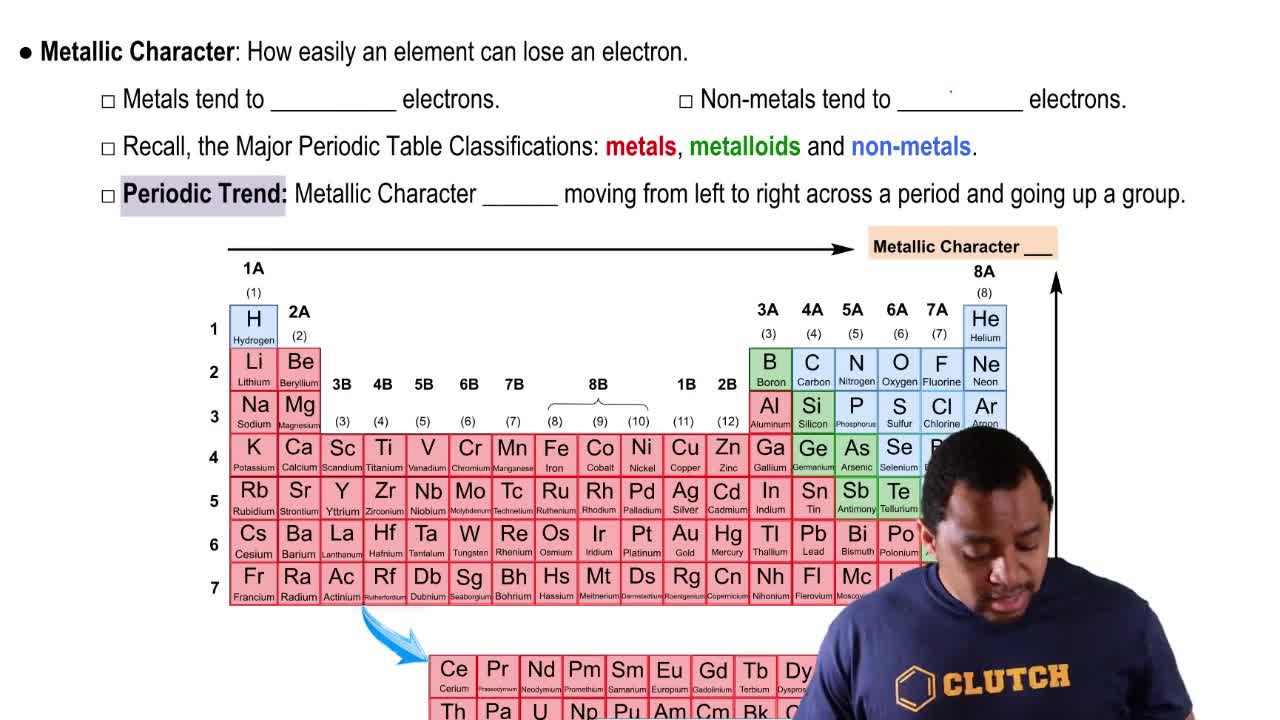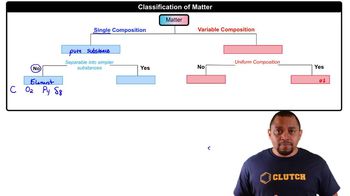Using the Chemistry Link to Health: Elements Essential to Health, answer each of the following:
a. What is a macromineral?
 Verified step by step guidance
Verified step by step guidance Verified video answer for a similar problem:
Verified video answer for a similar problem:



 2:40m
2:40mMaster Periodic Table: Classifications with a bite sized video explanation from Jules
Start learning